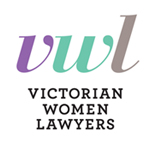Women lawyers and VEOHRC launch new bid to tackle legal profession gender imbalance
Victorian Women Lawyers (VWL) and Victorian Equal Opportunity and Human Rights Commissioner, Kate Jenkins combine forces today to launch the latest bid to redress the gender imbalance in senior ranks of the Victorian legal profession.
VWL’s latest initiative to stem the tide of senior women lawyers’ departing the profession is its Flexible Work Protocols: A best practice guide for productive and engaged legal workplaces – launched today.
“More women than men enter the legal profession and around 70% of the profession are women,” said Kirsten Adams, VWL Convenor. “For a long time we believed that sheer weight of numbers would change the gender imbalance in senior ranks of the profession. It has not. The annual exodus continues.
More women than men leave the profession within five years of starting out, and between the ages of 35 and 55, the number of practising women lawyers falls by around 75%,” said Ms Adams. “With the recent announcement by the Victorian Government to ensure judicial appointments are 50/50 gender balanced, there is even more pressure on the profession to take active steps to retain experienced, talented women.
Kate Jenkins, a practising lawyer before her appointment to the Victorian Equal Opportunity and Human Rights Commission (VEOHRC), said the legal profession, like almost all other workplaces, had to tackle ingrained stereotypes about how work ‘should’ be done and implement strategies to retain women.
The 25% of women who continue to practice at senior levels remain a minority in partnerships –women hold about 17% of equity partnerships in private practices nationally,” Ms Jenkins said.
Flexible work practices are crucial to ending the gender imbalance. This is not just an equality issue; it also makes sound business sense, enabling the profession to attract and retain skilled and talented lawyers – both women and men.
The Flexible Work Protocols directly address key barriers exposed in the 2014 report of the Law Council of Australia’s National Attrition and Re-engagement Study (NARS) which examined the experience of about 4,000 women lawyers nationally.
The findings set out in the NARS report are consistent with those detailed in the 2012 VEOHRC report, Changing the rules: The experiences of female lawyers in Victoria.
“It has been almost 15 years since VWL first released practical guidance on implementing flexible work options in legal practices. A lot has changed since then, and a lot hasn’t,” said Ms Adams.
“We need firms to actively support flexible work practices for women – and for men – to bring about transformational change in the culture of legal workplaces. In light of latest research, it is clear that active sponsorship and mentoring of women in the law are also critical elements in addressing the gender imbalance.
We look forward to the day when alarming statistics on women’s attrition from the law and barriers to their advancement are a thing of the past – when women’s experience is no different from that of their male counterparts. But for now our new Flexible Work Protocols provide a real and practical way for legal business and individuals to negotiate change, and embrace it,” Ms Adams concluded.
WHAT: Launch of VWL’s 2015 Flexible Work Protocols: A best practice guide for productive and engaged legal workplaces With Kate Jenkins, Commissioner, VEOHRC WHEN: 12.45pm – 2pm, Monday 13 April 2015 WHERE: Allens, 101 Collins Street, Melbourne Media inquiries :Alicia Patterson 0403 17 2024 or email
